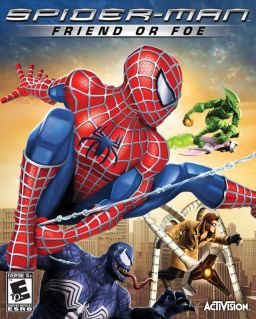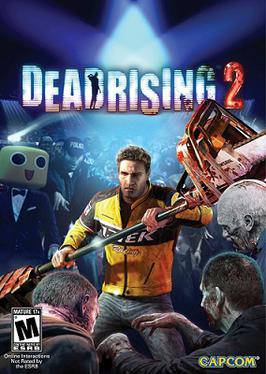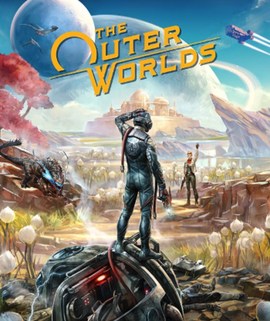
Shadow the Hedgehog is a 2005 platform game developed by Sega Studios USA and published by Sega as part of the Sonic the Hedgehog series. The game follows Shadow as he attempts to learn about his past, while suffering from amnesia, as he does an alien invasion plagues the Earth. Shadow the Hedgehog reintroduces third-person shooter elements from Sonic Adventure and Sonic Adventure 2, but greatly expands upon the concept and introduces nonlinear gameplay to the Sonic franchise. To defeat enemies and progress through the game, Shadow can use a variety of weapons from each faction and complete missions that will determine the game's plot and subsequently playable levels.

Star Wars: Episode III – Revenge of the Sith is an action video game based on the movie of the same name. It was released on May 5, 2005, for the PlayStation 2, Xbox, Game Boy Advance, Nintendo DS, and Symbian OS. For the Xbox 360's backwards compatible lineup, Revenge of the Sith is one out of the 400+ backwards compatible games for the 360. As part of the PlayStation 2 classics program, the PlayStation 2 version was re-released in Europe on the PlayStation Network on February 11, 2015, and in North America on April 28, 2015. Meanwhile, the Xbox version was also added to the backwards compatibility list for the Xbox One and Xbox Series X/S on November 15, 2021.

Sonic the Hedgehog is a 2006 platform game developed by Sonic Team and published by Sega. It was produced in commemoration of the Sonic series' 15th anniversary and intended as a reboot for seventh-generation video game consoles. Players control Sonic, Shadow, and the new character Silver, who battle Solaris, an ancient evil pursued by Doctor Eggman. Each playable character has his own campaign and abilities, and must complete levels, explore hub worlds and fight bosses to advance the story. In multiplayer modes, players can work cooperatively to collect Chaos Emeralds or race to the end of a level.

Cabela's Dangerous Hunts 2 is a 2005 hunting video game published Activision for PlayStation 2, Xbox, GameCube, and Microsoft Windows. It is a sequel to the 2003 game Cabela's Dangerous Hunts.

Star Ocean: The Last Hope is a 2009 action role-playing video game developed by tri-Ace and published by Square Enix for the Xbox 360, and the fourth installment in the Star Ocean series. The game's battle system features four party members, and is more team-oriented. It also features more of a sci-fi emphasis than past titles with the ability to control the player's ship. The ship is able to land on at least 5 planets or other space-based destinations. Players are able to travel through the "star ocean", jumping across planets. The game takes place a few centuries before the original Star Ocean, and revolves around Edge and his crew combating a mysterious threat called the "Grigori".

Spider-Man: Friend or Foe is a 2007 action-adventure beat 'em up platform game, based on the Marvel Comics character Spider-Man. The game borrows characters and designs from Sam Raimi's Spider-Man trilogy, with a plot that is non-canon to the films and therefore taking place within a divergent timeline where the villains seen in the films managed to survive. It features two player co-op gameplay, where one player controls Spider-Man and another one of his allies. The storyline of the game revolves around P.H.A.N.T.O.M.s, dangerous creatures created by mixing symbiotes with holographic technology, which a mysterious villain plans to use to take over the world. This villain has also captured and brainwashed many of Spider-Man's foes to help him acquire meteor shards that will strengthen his army. After being recruited by S.H.I.E.L.D., Spider-Man journeys across the globe to retrieve these shards himself and recruit more allies to his cause.

Destroy All Humans! is an open world action-adventure video game franchise that is designed as a parody of Cold War-era alien invasion films. Destroy All Humans! and Destroy All Humans! 2 were released for the PlayStation 2 and Xbox; Destroy All Humans! Big Willy Unleashed was released for the Wii; and Destroy All Humans! Path of the Furon was released for the Xbox 360 and PlayStation 3. A remake of the original game and its sequel were developed by Black Forest Games and were released in 2020 and 2022, respectively.

Dead Rising 2 is a 2010 action-adventure game developed by Blue Castle Games and published by Capcom. It was released between September and October 2010 for the PlayStation 3, Xbox 360, and Microsoft Windows. It is a sequel to Dead Rising, and is the second entry in the series of the same name. The game features a number of new features and improvements to its predecessor, including multiplayer options.
There are five pieces of downloadable content (DLC) for the Bethesda action role-playing video game Fallout 3. Each package of downloadable content adds new missions, new locales to visit, and new items for the player to use. Of the five, Broken Steel has the largest effect on the game, altering the ending, increasing the level cap to 30, and allowing the player to continue playing past the end of the main quest line. The Game of The Year edition of Fallout 3 includes the full game and all five pieces of downloadable content.

Sonic Free Riders is a motion controlled racing video game developed by Sonic Team and published by Sega for the Xbox 360. The game requires the use of Microsoft's Kinect peripheral and was a Kinect launch title in November 2010.

Knights Contract is a 2011 action video game developed by Game Republic and published by Namco Bandai Games for PlayStation 3 and Xbox 360. The story, set in a fantasy version of Medieval Germany, follows the witch Gretchen and former executioner Heinrich as they seek to stop the schemes of the alchemist Dr Faust, who has revived Gretchen's sisters as vengeful monsters in pursuit of their power. Gameplay has Heinrich exploring linear levels and fighting monsters, with Gretchen as a computer-controlled companion and spellcaster.

Phantasy Star Online 2 is a free-to-play online action role-playing game in the Phantasy Star series, developed by Sega Sapporo Studio and published by Sega. It was created as a successor to Phantasy Star Online and Phantasy Star Universe, Phantasy Star Online 2 features gameplay elements and aesthetics reminiscent of previous Phantasy Star games while incorporating a few unique twists on the formula. The first version was released for Windows in Japan in July 2012.

Ghostbusters: Sanctum of Slime is a cooperative action video game developed by Behaviour Santiago, and published by Atari. The game features four-player cooperative gameplay where players control Ghostbusters to defeat enemy ghosts. It was released in March 2011 for Microsoft Windows, PlayStation 3 and Xbox 360.

Deadfall Adventures is an action-adventure video game developed by The Farm 51 and published by Nordic Games. Deadfall Adventures was released on November 15, 2013, for Windows and Xbox 360, and on October 28, 2014, for PlayStation 3 under the name of Deadfall Adventures: Heart of Atlantis. The game is set in the universe of the Allan Quatermain series, created by H. Rider Haggard.

Darkwood is a survival horror video game developed and published by Acid Wizard Studio. The game was first released through Steam Early Access on July 24, 2014, eventually becoming a full game release on August 17, 2017 for Linux, macOS, and Windows. On March 20, 2019, a Nintendo Switch version was announced during the Nindies Nintendo Direct and was released on May 16, 2019. The game was also ported and released for the PlayStation 4 on May 14, 2019, for Xbox One on May 16, under the publisher Crunching Koalas, and for Google Stadia on September 17, 2021. It later released for PlayStation 5 on October 28, 2022, and for Xbox Series X/S on December 23, 2022.

Yakuza Kiwami is an action-adventure video game developed by Ryu Ga Gotoku Studio and published by Sega. It is a remake of Yakuza, the first game in the Yakuza series, originally released on Sony's PlayStation 2. Yakuza Kiwami was released on PlayStation 3 and PlayStation 4 in Japan on January 21, 2016, and on PlayStation 4 in Europe and North America on August 29, 2017. It was also ported to Windows via Steam worldwide on February 19, 2019, to Xbox One on April 21, 2020, and to Amazon Luna on December 22, 2022.

Ruiner is a cyberpunk twin-stick shooter video game developed by Reikon Games and published by Devolver Digital. It was released for Linux, Microsoft Windows, PlayStation 4, and Xbox One on 26 September 2017 and for Nintendo Switch on 18 June 2020.

The Outer Worlds is a 2019 action role-playing game developed by Obsidian Entertainment and published by Private Division. The game was released for PlayStation 4, Windows, and Xbox One in October 2019, with a Nintendo Switch version released in June 2020.

Haven is a 2020 role-playing video game developed and published by The Game Bakers. The game was released for PlayStation 5, Windows, Xbox One, and Xbox Series X/S in December 2020, while versions for PlayStation 4 and Nintendo Switch were released in February 2021. It received mixed reviews from critics, who were divided about the story.

Infernax is a 2D dark fantasy Metroidvania developed by Berzerk Studio and published by The Arcade Crew. It was released on February 14, 2022, for Nintendo Switch, PlayStation 4, Windows, Xbox One, and Xbox Series X/S. The game follows the young Duke Alcedor, who finds his village overrun by monsters upon returning from the Crusades. Infernax received generally favorable reviews. An update to the game, Deux or Die, was released on April 5, 2023, in which another player can join in as Cervul the Squire.



















